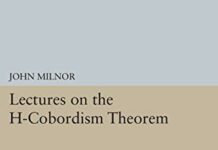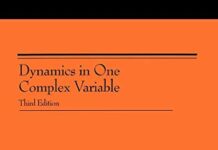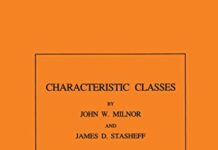
Ebook Info
- Published: 1963
- Number of pages: 160 pages
- Format: PDF
- File Size: 5.43 MB
- Authors: John Milnor
Description
One of the most cited books in mathematics, John Milnor’s exposition of Morse theory has been the most important book on the subject for more than forty years. Morse theory was developed in the 1920s by mathematician Marston Morse. (Morse was on the faculty of the Institute for Advanced Study, and Princeton published his Topological Methods in the Theory of Functions of a Complex Variable in the Annals of Mathematics Studies series in 1947.) One classical application of Morse theory includes the attempt to understand, with only limited information, the large-scale structure of an object. This kind of problem occurs in mathematical physics, dynamic systems, and mechanical engineering. Morse theory has received much attention in the last two decades as a result of a famous paper in which theoretical physicist Edward Witten relates Morse theory to quantum field theory. Milnor was awarded the Fields Medal (the mathematical equivalent of a Nobel Prize) in 1962 for his work in differential topology. He has since received the National Medal of Science (1967) and the Steele Prize from the American Mathematical Society twice (1982 and 2004) in recognition of his explanations of mathematical concepts across a wide range of scienti.c disciplines. The citation reads, “The phrase sublime elegance is rarely associated with mathematical exposition, but it applies to all of Milnor’s writings. Reading his books, one is struck with the ease with which the subject is unfolding and it only becomes apparent after re.ection that this ease is the mark of a master.? Milnor has published five books with Princeton University Press.
User’s Reviews
Editorial Reviews: Review “John Milnor, Winner of the 2011 Abel Prize from the Norwegian Academy of Science and Letters””John Willard Milnor, Winner of the 2011 Leroy P. Steele Prize for Lifetime Achievement, American Mathematical Society”
Reviews from Amazon users which were colected at the time this book was published on the website:
⭐I gave this book a 5star because it does succeed in presenting the main ideas,theorems,and proofs in Morse theory. This book was given as a reference in V.I.Arnold’s”Mathematical Methods Of Classical Mechanics” for further information on Riemannian curvature(AppendixI). It turns out that Arnold’s book contains much material which is prerequisite to Milnor. Euler-Lagrange equations,vector fields on manifolds,Poisson Brackets,and more which you will encounter in Milnor are explained in Arnold. Another book which helps is Bishop and Crittendon’s”Geometry Of Manifolds.” The configuration space of a mechanical system can and does in many cases translate to a Riemannian manifold with a motion of the system necessarily translating to a geodesic of the manifold. An example is a double planar pendulum. Since each pendulum is free to rotate 360 degrees,its configuration space is a torus or donut. Geodesics are extremal paths,hopefully minimal. One possible path is a closed spiral on the donut. Is it a geodesic? What’s the motion? This book answers a great many questions as to how the shape or curvature and topology of the manifold influences and determines its geodesics. A knowledge of homotopy theory,deformation retracts,cw complexes,etc. is needed. Not easy going but rewarding. I’m still working on it.
⭐This is a great book, a classic. Sure, the fonts and diagrams could use some modernization. But if you really want to learn a subject in Math, learn from the giants.This is very easy to read (assuming you are a first year in grad school in Math, or an advanced undergrad.)
⭐The classic work on the subject, written in the incomparable style of John Milnor. The difficult subject is explained with a simplicity and clarity which rivals how Richard Feynman was able to write about Physics.
⭐Great quality, book came with handwritten note!
⭐This is a good supplement for more information on Morse Theory but be warned that it is a set of lecture notes.
⭐This book is a classic. If your grandpa did math, he probably did it out of this book. I think maybe Gauss picked up a few of his tricks here.The age of this book was an issue. Some of Milnor’s words are not in common use any more. He doesn’t phrase his results in the modern language of tensors, which was troubling for me. With that said, some of Milnor’s proofs are so clear and readable that they can’t be improved upon. This is a great place to start learning Morse theory, though I’d look at a more modern treatment too if you are serious.
⭐This is an excellent book, it’s clear and direct with minimal fuss in the analysis and derivations. It covers the differential geometry or ‘morse theory’ at Master’s level. I recommend already having a working knowledge of riemannian geometry before starting this text or you may have a struggle.The negatives against this text are only that the diagrams and font is very dated.Lastly, if you go on YouTube you can actually find lectures by the man himself which are actually really good and worth using as learning materials.
⭐You can’t complain the book by Milnor. Awesome book on Morse theory.
⭐This book explains very deep subiects in an uncredible easy way! It must lie on every library of persons that study mathematics!OK
Keywords
Free Download Morse Theory (Annals of Mathematic Studies AM-51) 0th Edition in PDF format
Morse Theory (Annals of Mathematic Studies AM-51) 0th Edition PDF Free Download
Download Morse Theory (Annals of Mathematic Studies AM-51) 0th Edition 1963 PDF Free
Morse Theory (Annals of Mathematic Studies AM-51) 0th Edition 1963 PDF Free Download
Download Morse Theory (Annals of Mathematic Studies AM-51) 0th Edition PDF
Free Download Ebook Morse Theory (Annals of Mathematic Studies AM-51) 0th Edition



